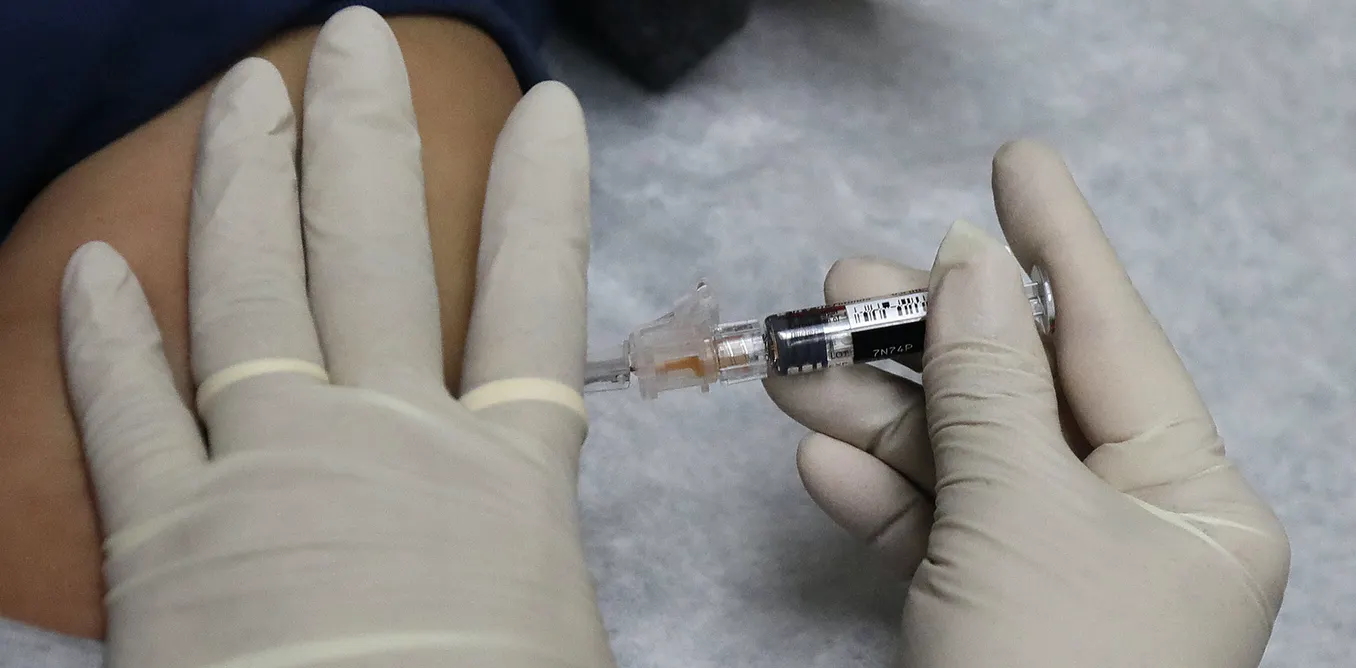There’s a new COVID variant driving up infections. A virologist explains what to know about NB.1.8.1
- Written by Lara Herrero, Associate Professor and Research Leader in Virology and Infectious Disease, Griffith University

As we enter the colder months in Australia, COVID is making headlines[1] again, this time due to the emergence of a new variant: NB.1.8.1.
Last week, the World Health Organization[2] designated NB.1.8.1 as a “variant under monitoring[3]”, owing to its growing global spread and some notable characteristics which could set it apart from earlier variants.
So what do you need to know about this new variant?
The current COVID situation
More than five years since COVID was initially declared a pandemic, we’re still experiencing regular waves of infections.
It’s more difficult to track the occurrence of the virus nowadays, as fewer people are testing and reporting infections. But available data[4] suggests in late May 2025, case numbers in Australia were ticking upwards[5].
Genomic sequencing has confirmed NB.1.8.1 is among the circulating strains[6] in Australia, and generally increasing[7]. Of cases sequenced up to May 6[8] across Australia, NB.1.8.1 ranged from less than 10% in South Australia to more than 40% in Victoria.
Wastewater surveillance in Western Australia has determined NB.1.8.1[9] is now the dominant variant in wastewater samples collected in Perth[10].
Internationally NB.1.8.1 is also growing. By late April 2025[11], it comprised roughly 10.7% of all submitted sequences – up from just 2.5% four weeks prior. While the absolute number of cases sequenced was still modest, this consistent upward trend has prompted closer monitoring by international public health agencies.
NB.1.8.1 has been spreading particularly in Asia – it was the dominant variant in Hong Kong and China[12] at the end of April.
How about the vaccine?
There’s potential for this variant to play a significant role in Australia’s winter respiratory season. Public health responses remain focused on close monitoring, continued genomic sequencing, and promoting the uptake of updated COVID boosters.
Even if neutralising antibody levels are modestly reduced[24] against NB.1.8.1, the WHO has noted current COVID vaccines should still protect against severe disease[25] with this variant.
The most recent booster available in Australia and many other countries targets JN.1[26], from which NB.1.8.1 is descended. So it makes sense it should still offer good protection.
Ahead of winter and with a new variant on the scene, now may be a good time to consider another COVID booster if you’re eligible[27]. For some people, particularly those who are medically vulnerable, COVID can still be a serious disease.
References
- ^ making headlines (www.perthnow.com.au)
- ^ World Health Organization (cdn.who.int)
- ^ variant under monitoring (www.who.int)
- ^ available data (www.immunisationcoalition.org.au)
- ^ ticking upwards (www.immunisationcoalition.org.au)
- ^ among the circulating strains (mike-honey.github.io)
- ^ generally increasing (www.health.nsw.gov.au)
- ^ up to May 6 (mike-honey.github.io)
- ^ has determined NB.1.8.1 (www.health.wa.gov.au)
- ^ collected in Perth (www.perthnow.com.au)
- ^ late April 2025 (cdn.who.int)
- ^ Hong Kong and China (github.com)
- ^ collected in January 2025 (cdn.who.int)
- ^ Recombinant (theconversation.com)
- ^ came about (www.sciencedirect.com)
- ^ a suite of mutations (cdn.who.int)
- ^ ACE2 receptors (theconversation.com)
- ^ mutations include (cdn.who.int)
- ^ recent preprint (www.biorxiv.org)
- ^ LP.8.1.1 (theconversation.com)
- ^ more severe disease (cdn.who.int)
- ^ symptoms of NB.1.8.1 (timesofindia.indiatimes.com)
- ^ Joannii/Shutterstock (www.shutterstock.com)
- ^ are modestly reduced (www.biorxiv.org)
- ^ protect against severe disease (cdn.who.int)
- ^ targets JN.1 (theconversation.com)
- ^ if you’re eligible (www.health.gov.au)















